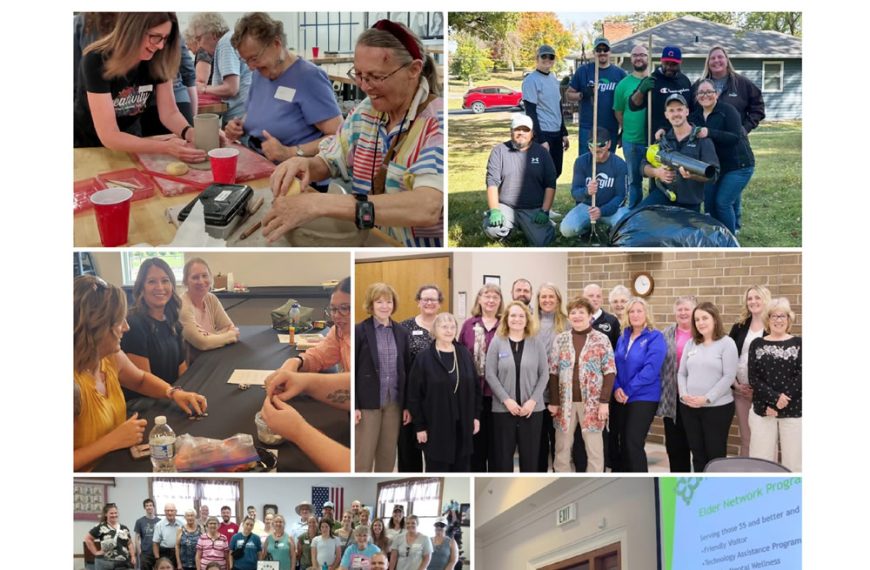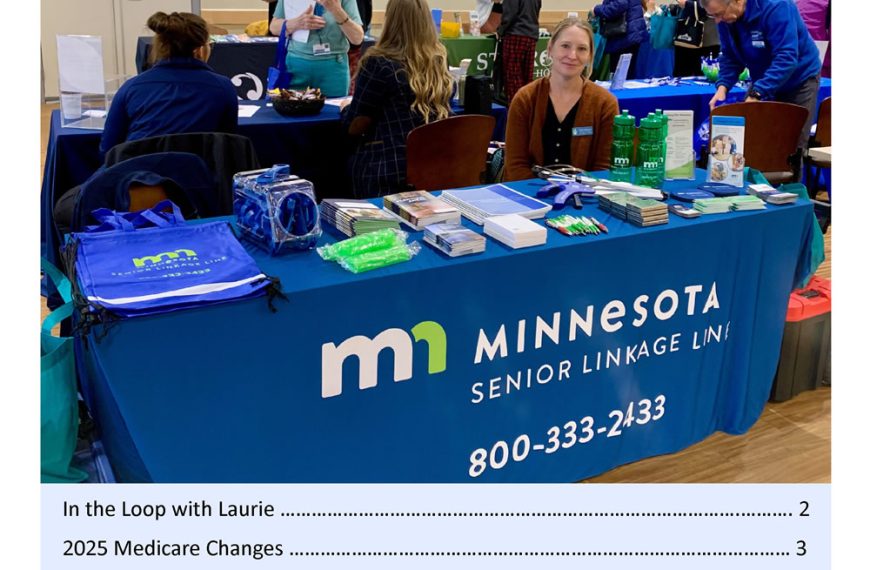

In honor of this milestone, we asked three former staff to recall the early days of SEMAAA – Bill Markus, Arlene “Arty” Theye, and Connie Bagley.
Bill:
“As I recall, the year started out normally; busy but uneventful. But 1981, as it unfolded, turned into a wild roller-coaster year for the Area Agency on Aging.
Up to that point, the AAA was housed within the Region 10 Development Commission, a regional planning and funding organization since 1975. The RDC provided the Aging program with local funding, accounting services, office space and other supports.
The Aging program had a staff of four and our Aging advisory committee to help make decisions on Area plans, policies, and funding of grants. As Spring approached, our Aging Program manager resigned and moved out of the area. So we were down to three staff, and it took almost six months to hire a new Program manager, who came from out of state.
No sooner had she come on board than our sponsor, the Regional Development Commission, started the process of dissolution. There was a period of public hearings, testimony, and written arguments on both sides of the issue. There was a great deal of TV, radio and press coverage of the process. Needless to say – the stress level was high and getting higher by the week.
After a couple months, the big vote came to the full Commission. Dissolved!
YIKES! What do we do now?
The Aging program HAD to continue to exist because of the federal Older Americans Act, so we went through the legal process of setting up a new non-profit corporation, which became SEMAAA, inc. We had to form a new board, find new office space and move to a new location. One major problem: we had very little cash since our local funding support was gone.
We may have been in a bind. But do you know that when trouble hits, often people rally? And help shows up — along with kindness and caring in the most unexpected ways. In our case, it did!
The first big step took place when one of our new board members, Alex Smekta (Rochester Mayor) spoke with Roger Stasek (director of the Rochester Senior Center). He then attended a senior center board meeting and was granted free space for us in the Castle on the third floor (later we paid a bargain rent).
Once we had secured a place to have our offices, many volunteers showed up to help us move our donated desks and equipment. Pickup trucks and strong backs got us to a new home; four of us in one room. Barb, Arlene, Maxine and myself — cozy as can be.
Things were heading for a steady course, but the roller coaster had one more thrill to throw at us; our new director resigned and moved to Washington. After a few months, we hired Connie and the next chapter was underway.”
Arty:
“It’s hard to believe I spent over sixty percent of my lifetime working for SEMAAA. I certainly learned a lot over those 38 years. Now that I am a “senior,” I can say that so many of the things older people face are true. Do I feel old? Not really, but the physical changes do happen: like hearing, eyesight and creaky bones. Mentally, the change I notice most is I am slower to remember names. Retirement is great, the pace is mine.
I feel fortunate that the agency afforded me the ability to help people. Grateful callers to the Senior LinkAge Line were pleased to get direction, non-biased advice, simplified facts, the correct forms, or understanding of how the “system” works. That was satisfying – as was sitting at a table with a dinner sharing nourishment and conversation.
The morning coffee talks with staff is something I miss. We shared stories, problem-solved together, vented our fears, hopes and frustrations. Seeing the region’s towns and people and understand-ing their unique subcultures was so interesting. Each place seemed to have a personality – each person a story.
It is fortunate to have a stable Older Americans Act. Even though various Presidents and Congresses or Governors created ups and downs in funding or changes in rules, the forecasts made in the aging network were accurate. Population changes, minority diversity, employment challenges, technology breakthroughs and even preparing for natural disasters and pandemics were always on the agenda and still are. The nation, states, and its regions are not the same (likely never will be). Each cohort of citizens is different; their needs vary. Accepting this and allowing flexibility is important; Minnesota and SEMAAA are very aware of this.
There are unforeseen changes and challenges facing all of us. The Area Agency on Aging may be small and still unknown to many, but it has resiliency and a strong backbone, willing and open to whatever is to be. I am both thankful and proud to have served the agency and wish all the staff, board, and entire network a bright future.”
CONNIE:
“Memories of the 2007 flood that affected many seniors and their families in Fillmore, Houston, and Winona counties – and all the time spent helping them recover – is something that I will always remember. People’s basements were literally full of mud. Furnaces and water heaters were a total loss, as they were completely plugged up with mud. Walls were destroyed and needed repair; a lot of bleach was used to combat the mold that began to grow. The homes that they had lived in for years were completely decimated, and they needed to start over.
FEMA was involved, and we were busy helping seniors complete applications so they could receive the help they needed. HUD brought in trailers as a temporary housing solution. SEMAAA staff helped with referrals to SEMCAC for meals, and a dining site was set up. We also helped with expanded transportation services and other needed support. It took almost two years for people to get back to a permanent living situation after the flood. We were glad that we could be a part of this wonderful example of “people helping people!”
Another memory that comes to mind is the day we moved from our office space in downtown Rochester to SEMAAA’s current office on Superior Drive NW. I liked the downtown location (in the Premier bank building), but there were changes happening around us; we needed more space, and there was no room for expansion at the bank location. Not to mention the parking was challenging.
We worked with local commercial realtor, Bucky Beeman, and he showed us so many office spaces. (Keep in mind that we did not have a big budget, and we were quickly running out of options.) Bucky said he had one last option; when we saw the large parking lot, we immediately said, “We will take it!” It was just the right amount of space, and we were able to negotiate for additional space for a conference room.
Then, the real adventure began, as the moving company did not realize just how much stuff we had! They did not even bring any moving carts! We had so many office chairs – they took up an entire truckload! If Kim and Dan had not rolled up their sleeves and helped, we would still be unloading! I don’t think we left the office until 10:30 pm that night. The space needed some renovation; the SLL space, that I fondly refer to as the “Bull-Pen,” needed quite a bit of work.
When we first moved in seven years ago, there were just two other buildings around us – now there are around 22 buildings with more restaurants. Lucky we moved when we did! I always said that I needed to retire before we went through another move.
We became a nonprofit organization in 1981, after the regional development commission dissolved. An executive director was hired, and she left after just six months. Then the board offered me the opportunity to become the new director. At that time, we were the only free-standing AAA in the state. We had the freedom to experiment and to see what worked best. I was very pleased with the development of our board of directors, as it truly was a representation of the wide range of backgrounds within our senior population. Although we faced some challenges, we powered through and kept the focus on senior resources. When I started, we had four staff. When I retired, we employed over twenty-two staff! It was wonderful to be part of such a strong team and community. I truly love Southeastern Minnesota, especially Rochester – a great place to live, work and retire in!”




